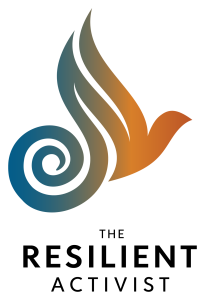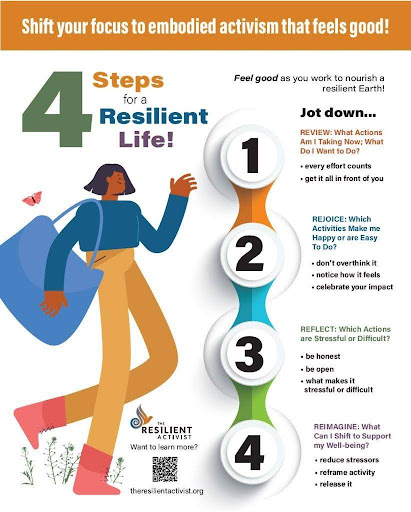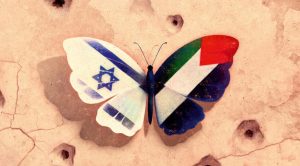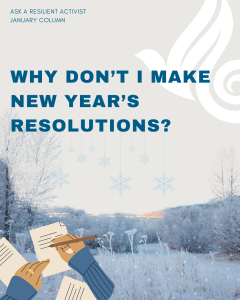
The Resilient Activist believes environmentalists can protect and nourish the earth only when they are nourished themselves.
By teaching people how to self-tend, set boundaries, prioritize joy, and find a style of activism that is invigorating to them, we are transforming the environmental movement from the inside out.
Please consider making a donation to support our work today.
How do I become a resilient activist?
When I was a child, the answer to the “what do I want to be when I grow up” question was: the next Jane Goodall. Another female explorer of habitats undisturbed by human intrusion, studying the behaviors of misunderstood creatures, educating the world about their value. Certain that this was the path for me, I spent my college years earning ecology and evolutionary biology degrees. Every class about every living being offered at my school was on my schedule; I absorbed the knowledge about non-human life with such fascination.

My dreams of becoming the next Jane Goodall…
Until a pattern began to emerge. From ornithology to mammalogy to marine biology, each class taught me about the dangers imposed on these beloved creatures by humans. All the species I loved were at serious risk of extinction – all because we pollute their habitats, extract their resources, destroy the quality of the air and water and soil, convert their worlds into industrial farms and strip malls, etc. Not only are we responsible for a sixth mass extinction happening before our very eyes, we have violated the natural rhythms of our planet’s climate in ways that have never been recorded before.
My dreams of becoming the next Jane Goodall were shattered, and I was devastated. I was angry, I was grief-stricken. Thinking of the quiet pain felt by a forest as a community of trees is cut down for our profits, the fear in a bird who can’t find a safe habitat to build a nest, the exhaustion of a tiger who has traversed miles without finding a single trace of another tiger – I am fighting tears as I type these words.
The everything activist
After college, I returned to my hometown of Kansas City with a furious conviction: I would do anything and everything in my power to fight for the natural world. Without pause, I dove headfirst into any environmental organization I could find, signing up to participate. Every petition was signed, letters were sent to politicians, I could be found chanting at every protest. Every single ounce of my life was scrutinized in terms of its impact on the planet, and I chastised myself for having such a horrific “carbon footprint.” Every food item in my pantry, every product in my bathroom, every piece of clothing in my closet was assessed and replaced with “eco-friendly” alternatives where appropriate.
During the quarantine period of 2020, I could be found reading every book, listening to every webinar and podcast, watching every documentary about the global crisis. Quickly I began to understand the interconnectedness of climate change and biodiversity loss with countless social injustices – all of which could be attributed to a system of exploitative capitalism, violent white supremacy, and patriarchal colonialism. My head was spinning as I ingested one piece of devastating truth after another; my need to extend my activism to greater heights only intensified. Every single day must be spent working to improve the state of our planet in one way or another, or I would feel so ashamed of myself.

Photo credit: Briana
Let’s pause and consider the definition of resilience here. Was my behavior during this period of furious activism very resilient?
Nope.
Cue the burnout. Collapsed exhaustion. Disappointment at my failed efforts. I had placed the responsibility of saving the world on my own shoulders, and I couldn’t do it. Very mean things were said about me, by me.
“What is mine to do?”

During this time, I attended The Resilient Activist’s Four Steps for a Resilient Life workshop. Stumbling upon it in my email inbox, I signed up in a desperate attempt to restore myself. The workshop forced me to reflect on my activism and see how unsustainable it was. By forcing myself to participate in EVERY type of activism for EVERY crisis and injustice I knew about, I was overextending myself. The workshop reminded me that it was not up to me alone to save the world. In reality, there are countless other humans putting in the work in their own way. Thus, I now have to grapple with the question: “what is mine to do?” What activities bring me joy? Which types of activism allow me to utilize my skills in the best way? Which activities are causing me stress and need to be let go?
Once I dropped from my shoulders the self-imposed burden of having to ‘save the world’, I could breathe a sigh of relief and ask myself ‘What can I still do?'”
Deb Ozarko
At the end of the day, for me, it always comes back to wildlife. What I really want to do is restore habitats, preserve biodiversity, and create opportunities for future females to become the next Jane Goodall. I can do this by taking care of myself, because I can’t continue to do the work if I’m a puddle of burned-out mess on the floor. I can do this by uplifting and supporting other activists who are putting in the work in their respective fields.
Isabelle Drury from the incredible “Finding Sanity” newsletter1 writes: What if, by letting go of saving the world, we can allow ourselves to love the world? To care for it the best we can? For all the humans and non-humans, for those in immediate danger or for those in safer hands? To ease suffering by creating a supportive community of those doing their very best? It’s not our job to turn a sinking ship around, but perhaps it’s all of our duty to help sail the ship to a better place.”
We can do this, together.
This post is one of a three part series exploring the themes of resilience and activism – see also: What is an activist, anyway? and What is resilience?




I can feel your pain here as you talk about your early aspirations, feeling depleted and angry, feeling you must do all and be all and how that can so adversely affect one’s health. Sometimes it takes coming to a crisis point in life to just stop and reassess where we have been, and where we now want to go. Just knowing there are countless others around this planet who do care, who are taking action in whatever way they can, to be good stewards of Mother Earth, I feel is the greatest fulfillment, joy and purpose in my life. I believe it takes a shift in consciousness to really come back full circle to the truth that if we do not care for that which sustains all life, nothing else matters.
Very wise words, Maria! Acknowledging and appreciating all stewards of the Earth is vitally important. We are all doing the work 🙂